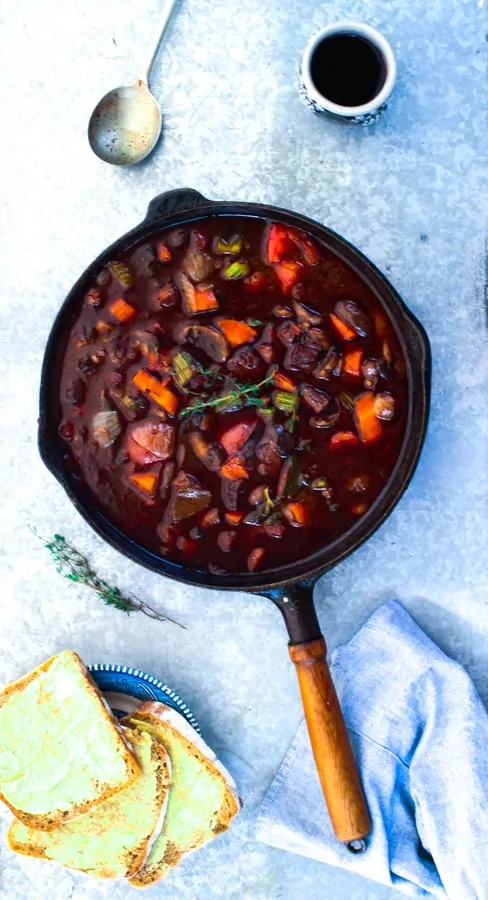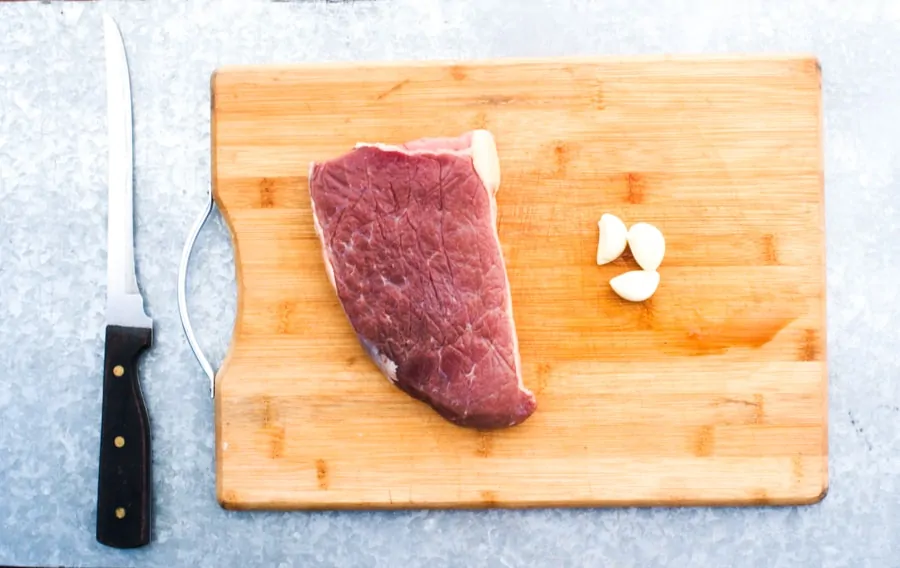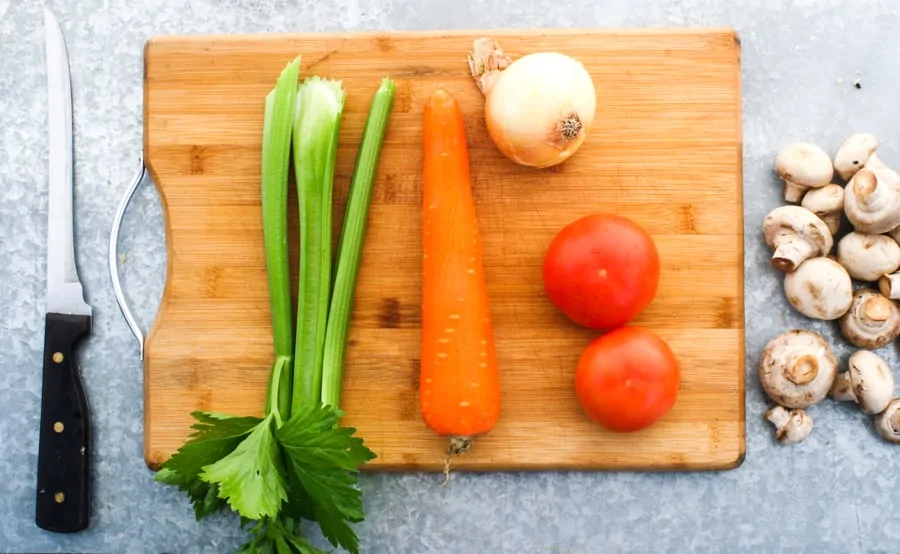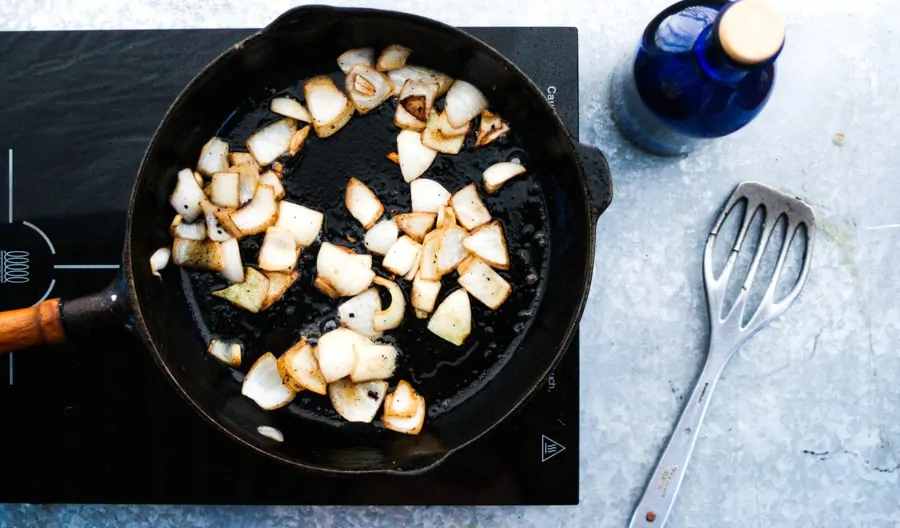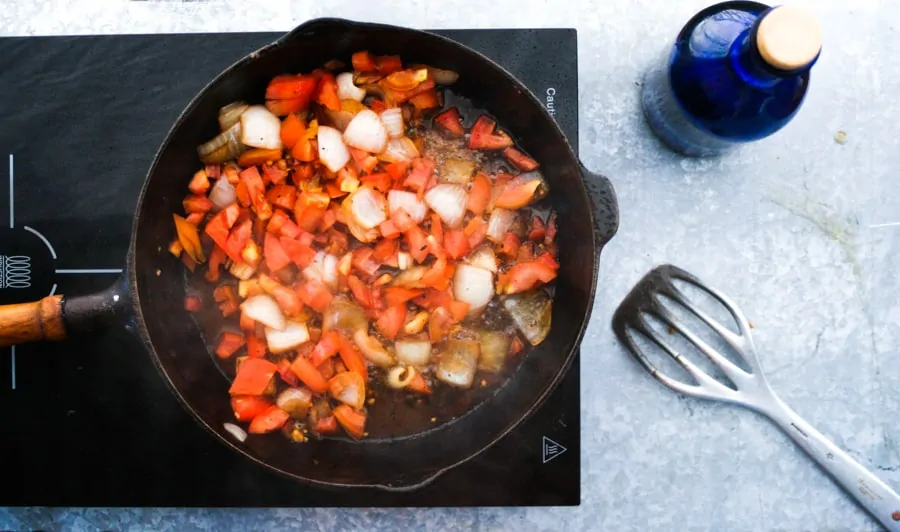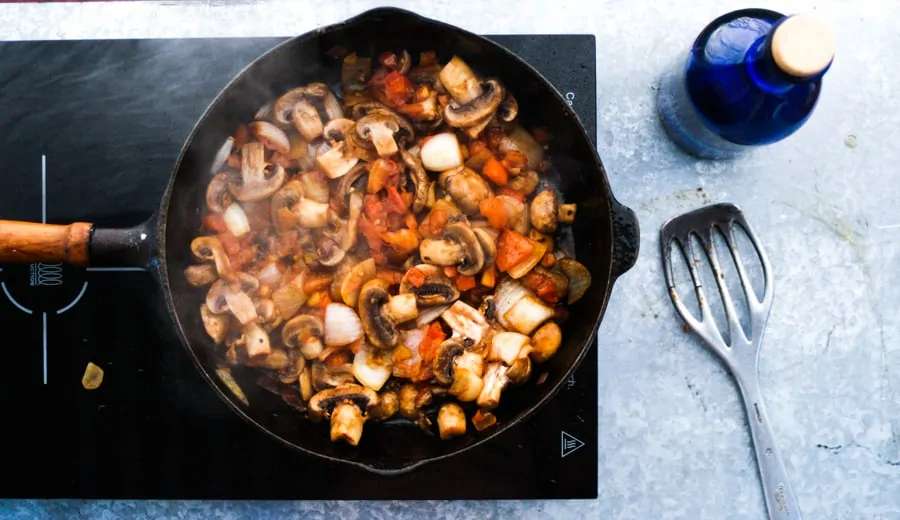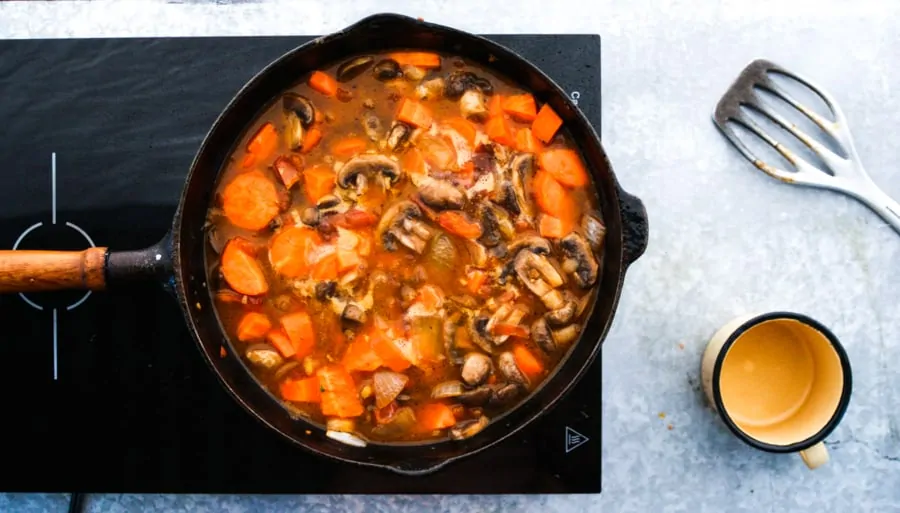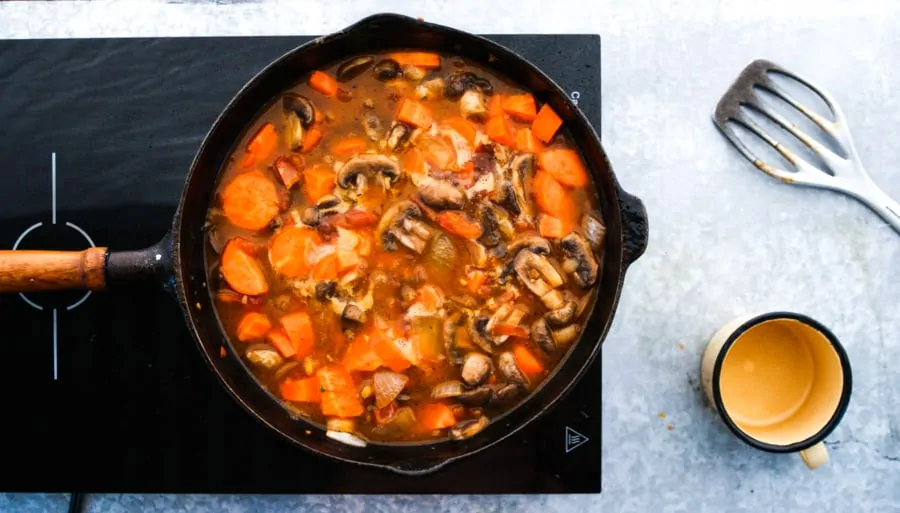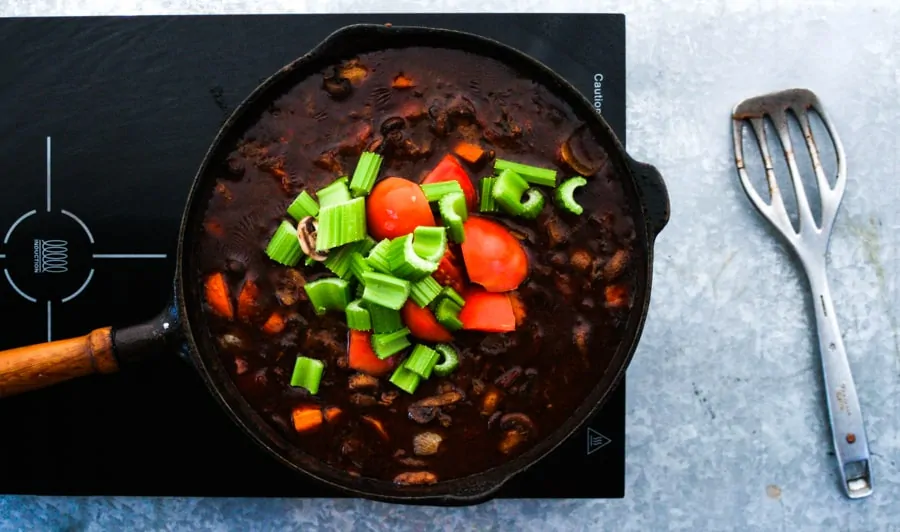With cold weather seriously enveloping the Northern Hemisphere, today we have for you a goulash recipe.
Goulash is a Northern and Central European meat stew, which has its far back roots in medieval Hungary. It was origionally made by shepherds, and the name goulash, stems from the Hungarian word for shepherd. Now goulash it is eaten all over Europe and many countries have their own specific version of the dish. Germany makes a dark, thick goulash which is commonly eaten over egg noodles. America has its own signature goulash, which incorporates pasta into the sauce for an easy one pot meal.
While these variation are all delicious, one of the most popular types of goulash is still the Hungarian style version. Hungarian goulash has also changed over the years. Traditionally it was almost completely meat dominated, with the other main ingredient being potato. However the Hungarian goulash has since evolved to be lighter and brighter, including lots of paprika, tomato, carrots and sometimes garlic.
One thing that has stayed the same however is that Hungarian goulash can take up to 4 hours to cook. The reason for this is that the meat called for is generally chuck or flank. These cuts which contain more connective tissue require long and slow cooking times, during which the connective tissue of the meat is dissolved. This makes the meat chunks tender, and it also thickens the stew and gives it a silky texture. And this is the only source of thickening in a typical Hungarian goulash. Flour makes the broth muddy and clouds up the flavors, so this emulsification of the connective tissue into the broth is very important.
While there is a wonderful sense of satisfaction in the slow cooked meal that you got going on a Saturday morning, and which has been bubbling all afternoon, there is not always time for long and slow stew making. Particularly in the week.
Which is where this recipe comes in. It takes roughly 40 minutes from start to finished, so can be for considered a week night goulash meal. Of course this quick cook time means nothing, if the goulash does not the silken texture and deep flavors that slow simmered versions have.
However, with a few tips and tricks, this goulash is amazingly flavorful and gives one the feeling that it has been simmered for an age.
Firstly, the steak. You need to start off with a tender cut of steak, such as sirloin. To give the steak extra flavor and tenderness, rub it with garlic paste as directed in the recipe steps. Next up, pan sear the steak in its whole form, without cubing it first. Many stew recipes call for you to cube your meat and then brown it. This can have the effect of drying out the meat, and can make it more difficult to get an even sear on the cubes. Conversely, if you sear the steak as is, and cube it afterwards, you will get a beautiful even sear on the outside, and retain a good portion of the juices.
Besides the special treatment of the steak, there are three more areas which play a part in giving this quick stove top version of Hungarian goulash the desired flavor and texture. And they are:
- fresh paprika,
- gelatin, and the
- oil of smoked oysters.
The paprika should be as fresh as possible. This is because paprika is used in large quantities in Hungarian goulash. And if paprika is slightly stale, it takes on a bitter taste. If one puts a number of tablespoons of bitter old paprika into a soup or stew, this taste will run right through the dish and become the main thing one tastes. Obviously not a good situation.
The gelatin is required to give the goulash the silky texture and slight thickening that a tougher piece of meat, slow cooked, would have. The gelatin works like a charm to achieve this.
Lastly, the oil from a tin of smoked oysters. That oil is like umami gold. If you have a tin of smoked oysters on hand I definitely recommend that you use a tablespoon of their oil to add in to the goulash. If you do NOT have a tin of smoked oysters gathering dust, you can also substitute for regular fish sauce. However, make sure to decrease the quantity to one or two drops. Fish sauce is very potent, and a tablespoon full with render a goulash into a fishy-lash!
The is one other ingredient in this recipe which assists to give it an extra depth of flavor. And that is sumac! Sumac is a slightly tart, tangy spice, which really sings in this recipe. The tartness compliments the umami flavors of the browned meat, onions, mushrooms and oyster oil to perfection, and it also adds an additional smoky depth.
And there you have it. All the secrets to making a mouth wateringly flavorsome goulash, within the short space of 40 minutes. Let the world of weeknight goulash be your oyster.

Quick Stove Top Deep Flavored Hungarian Goulash
Ingredients
- 500 grams sirloin steak
- 3 cloves garlic
- Oil for frying
- 2 tablespoons butter
- 1 onion
- 4 to matoes
- 250 grams mushrooms
- 2 medium sized carrots
- 3 sticks celery reserve the tops if they are nice and fresh
- 1 tablespoon smoked oyster oil or fish sauce, but reduce quantity to 2 drops
- 2 cups vegetable or beef stock
- 4 tablespoons gelatin
- 2 sprigs fresh thyme dried thyme can be substituted
- ½ teaspoon soya sauce
- 2 tablespoons tomato paste
- 2 tablespoons sumac
- 4 tablespoons paprika
- 1 bay leaf
- Salt and pepper for seasoning
Instructions
-
Assemble all ingredients.
-
Finely chop the garlic. Take your knife, and squash the chopped garlic against your chopping board until it is almost a paste. You can also use a garlic crusher, and squash the crushed garlic further with the blade of your knife against the chopping board.
-
Now rub your cut of steak with the garlic paste and set aside. This will help to tenderise the steak.
-
Finely chop two of the tomatoes, and cut the other two tomatoes, celery, carrots, onion and mushrooms into larger pieces.
-
Place a large skillet onto the stove and bring up to a medium high heat. Add enough oil to lightly coat the bottom and 2 tablespoons of butter. Take your rubbed piece of steak and wipe off most of the garlic. Place the steak into the pan and cook for approximately 3-2 minutes each side, or until nicely browned.
-
Once browned on both sides, remove the steak from the pan and set it aside to rest.
-
Now add the chopped onions to the same skillet in which you browned the steak, and fry until lightly browned.
-
Once the onions are lightly browned, add in the finely chopped tomato and cook together for approximately 2 minutes, stirring intermittently.
-
Now add in the chopped mushrooms and cook for another half minute, stirring intermittently.
-
Add in the oyster oil or fish sauce.
-
Now add the carrots pieces and stir them in.
-
Pour in the stock and bring to a simmer.
-
Once simmering, add in the gelatin, thyme, soya sauce, tomato paste, sumac, paprika, bay leaf and celery tops (if on hand), stirring well to incorporate the gelatin.
-
While allowing the goulash to continue to gently simmer, cut the rested steak into medium sized blocks.
-
Add these blocks to the goulash and allow to gently simmer for a further 20 minutes, stirring occasionally.
-
Towards the end of the simmering period, about 15 minutes, add in the cubed tomato and celery. Stir them in and allow to simmer for the remaining five minutes.
-
Once the goulash has finished simmering, all that is left to do is season with salt and pepper. Serve hot, with a side of crusty buttered bread.
Notes: If you wish to add some creaminess to the goulash, you can serve it topped with a dollop of sour cream or yoghurt. Goulash keeps well, and will taste perhaps even better the next day. In the refrigerator leftovers will keep up to one week. You can also freeze any leftovers.
STEP ONE – ASSEMBLE YOUR INGREDIENTS
Assemble all of the ingredients.
STEP TWO – CREATE A GARLIC PASTE
Finely chop the garlic. Take your steak knife, and squash the chopped garlic against your chopping board until it is almost a paste. You can also use a garlic crusher, and then squash the crushed garlic further with the blade of your knife against the chopping board.

STEP THREE – RUB THE STEAK WITH GARLIC PASTE
Now rub your cut of steak with the crushed garlic and set aside. This will help to tenderise the steak.
STEP FOUR – CHOP THE VEGETABLES
Finely chop two of the tomatoes, and cut the other two tomatoes, celery, carrots, onion and mushrooms into larger pieces.
STEP FIVE – BROWN THE STEAK
Place a large skillet onto the stove and bring up to a medium high heat. Add enough oil to lightly coat the bottom and 2 tablespoons of butter. Take your rubbed piece of steak and wipe off most of the garlic. Place the steak into the pan and cook for approximately 3-2 minutes each side, or until nicely browned.

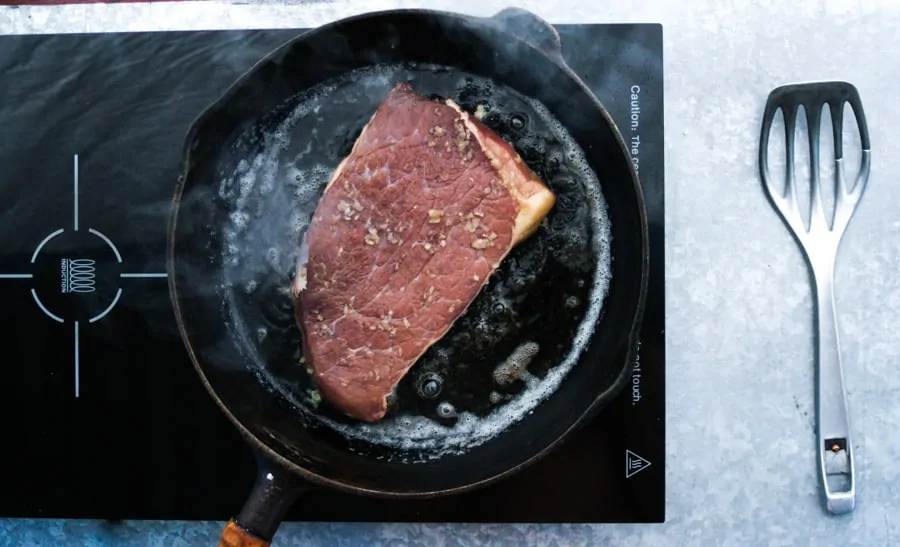
STEP SIX – SET THE STEAK ASIDE TO REST
Once browned on both sides, remove the steak from the pan and set it aside to rest.
STEP SEVEN – BROWN THE ONIONS
Now add the chopped onions to the same skillet in which you browned the steak, and fry until lightly browned.
STEP EIGHT – ADD THE FINELY CHOPPED TOMATO
Once the onions are lightly browned, add in the finely chopped tomatoes and cook together for approximately 2 minutes, stirring intermittently.
STEP NINE – ADD THE MUSHROOMS
Now add in the chopped mushrooms and cook for another half minute, stirring intermittently.
STEP TEN – ADD THE OYSTER OIL OR FISH SAUCE
Add in the oyster oil or fish sauce.
STEP ELEVEN – ADD THE CARROTS
Now add the carrots pieces and stir them in.
STEP TWELVE – ADD THE STOCK AND BRING TO A SIMMER
Pour in the stock and bring to a simmer.
STEP THIRTEEN – ADD REMAINING FLAVORING INGREDIENTS

Once simmering, add in the gelatin, thyme, soya sauce, tomato paste, sumac, paprika, bay leaf and celery tops (if on hand), stirring well to incorporate the gelatin.

STEP FOURTEEN – CUBE THE STEAK
While allowing the goulash to continue to gently simmer, cut the rested steak and into medium sized blocks.
STEP FIFTEEN – ADD THE BEEF CUBES TO THE GOULASH
Add these blocks to the goulash and allow to gently simmer for a further 20 minutes, stirring occasionally.
STEP SIXTEEN – AFTER 15 MINUTES, ADD THE CUBED CELERY AND TOMATO
Towards the end of the simmering period, about 15 minutes, add in the cubed tomato and celery. Stir them in and allow to simmer for the remaining five minutes.
STEP SEVENTEEN – SIMMER FOR A FURTHER 5 MINTUES, SEASON AND SERVE
Once the goulash has finished simmering, all that is left to do is season with salt and pepper. Serve hot, with a side of crusty buttered bread. You can also add a dollop of sour cream or yoghurt on top for a creamy element.
Goulash is a perfect dish to make on cold winter nights. Its warm bright and savory flavors makes it a real winter time winner. And now, you don’t have to wait for the weekend to make it!
What are some of your favorite wintertime or weeknight meals? Do you have a goulash ingredient or technique that you would like to share? If so, let us know in the comments.
Jen Miller is a former electrical engineer and product specialist with more than 20 years of product design and testing experience. She has designed more than 200 products for Fortune 500 companies, in fields ranging from home appliances to sports gear and outdoor equipment. She founded Jen Reviews to share her knowledge and critical eye for what makes consumers tick, and adopts a strict no-BS approach to help the reader filter through the maze of products and marketing hype out there. She writes regularly and has been featured on Forbes, Fast Company, The Muse, The Huffington Post, Tiny Buddha and MindBodyGreen.
